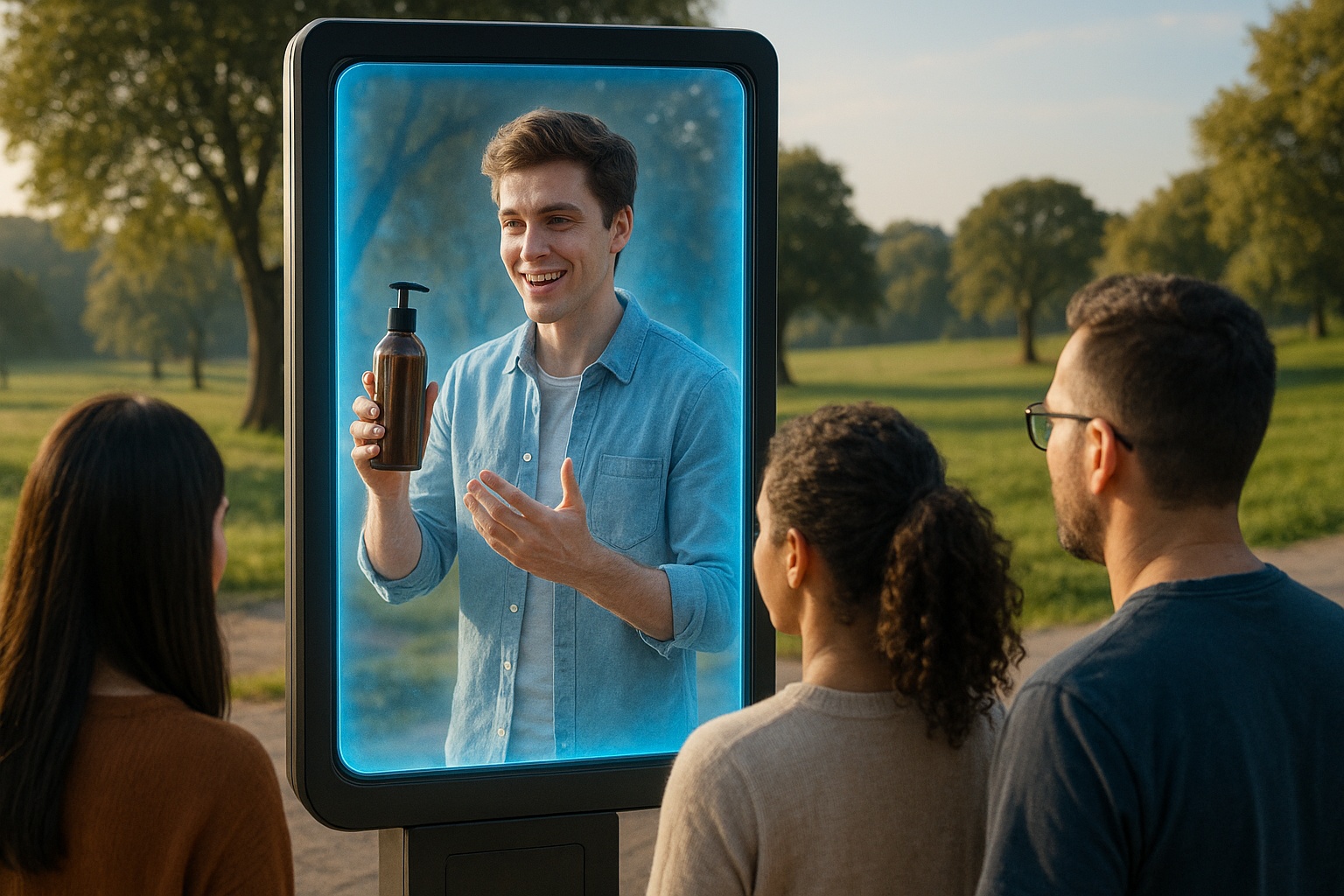In today’s data-driven world, marketing teams are under more pressure than ever to prove the effectiveness of their strategies. Attribution modelling, which identifies the marketing channels contributing to a conversion, has long been the backbone of performance evaluation. Yet, as consumer journeys become more fragmented across devices, platforms, and touchpoints, classical attribution models are increasingly strained.
Enter Quantum Machine Learning (QML), a new frontier at the intersection of quantum computing and artificial intelligence. Although still in its early stages, QML promises to address key computational challenges that currently limit traditional attribution techniques. It introduces an unprecedented capacity for processing complexity, identifying nonlinear relationships, and dynamically learning from vast, high-dimensional datasets.
In this article, we’ll dive deep into how QML can revolutionise marketing attribution models, explain the core concepts behind its functionality, explore the specific algorithms being developed, and evaluate the benefits and challenges that come with its adoption.
What is Quantum Machine Learning (QML)?
Quantum Machine Learning combines the mathematical structures of quantum mechanics with the predictive capabilities of machine learning. At the heart of QML is quantum computing, a fundamentally different approach to computation that leverages the principles of quantum physics, superposition, entanglement, and quantum parallelism.
Where classical bits represent either 0 or 1, quantum bits (qubits) can exist in multiple states simultaneously. This enables quantum computers to process complex combinations and permutations of data in parallel, thereby exponentially increasing their computational power.
QML algorithms are designed to take advantage of this quantum parallelism to perform tasks such as classification, clustering, regression, and optimisation with significantly greater efficiency than their classical counterparts.
When applied to marketing attribution, this opens up a new world of possibilities in terms of speed, precision, and adaptability.
Understanding Marketing Attribution and Its Challenges
Attribution modelling seeks to answer one critical question: Which marketing activities are driving conversions, and how much credit should each touchpoint receive?
Marketers use a range of classical models to distribute credit across different interactions:
- Last-touch attribution assigns all credit to the final interaction that occurred before conversion.
- First-touch attribution assigns credit to the first point of contact.
- Linear attribution distributes equal credit across all touchpoints.
- Time-decay models give more weight to recent interactions.
- Markov chains and Shapley value-based models aim to provide more accurate, probabilistic distributions.
However, these traditional approaches face multiple limitations:
- Combinatorial Explosion: As the number of channels increases, the number of possible interaction combinations grows exponentially. For N channels, there are 2^N possible subsets to evaluate, a task that quickly becomes computationally intractable.
- Simplistic Heuristics: Traditional attribution models often rely on overly simplistic assumptions, ignoring the complex and nonlinear relationships between channels. This leads to biased or inaccurate attribution, especially in multi-touch customer journeys.
- Delayed Insights: Classical algorithms struggle to process intricate attribution models in a timely manner. As a result, marketers receive lagging performance metrics, which hinder their ability to make real-time campaign adjustments and optimisations.
- Static Modelling: Many classical attribution models operate under fixed assumptions, failing to adapt to rapidly changing consumer behaviours, cross-device journeys, and dynamic market trends, making them less effective for modern, agile marketing strategies.
QML presents a powerful solution to these problems, making marketing attribution smarter, faster, and far more granular.
How QML Enhances Marketing Attribution
1. Faster and More Efficient Data Analysis
One of QML’s most significant advantages is its speed. Quantum algorithms can process large volumes of high-dimensional marketing data far faster than classical systems. This is especially important in attribution, where analysing every possible path to conversion involves evaluating an exponential number of touchpoint combinations.
By leveraging quantum amplitude amplification, a technique related to Grover’s algorithm, QML can identify and highlight the most relevant data subsets more efficiently, thereby reducing computation time and enabling real-time attribution insights.
2. Improved Accuracy and Granularity
QML can model nonlinear relationships with far more nuance than classical models. Traditional attribution methods often fail to capture the subtle interplay between touchpoints, say, the way a display ad seen on mobile influences the effectiveness of a follow-up email on desktop.
QML algorithms can detect these multi-channel dependencies and assign conversion credit more accurately, even in noisy, incomplete datasets. This means marketers can understand the actual contribution of each channel with unprecedented detail.
3. Uncovering Hidden Patterns and Insights
Quantum algorithms are particularly adept at exploring vast solution spaces and uncovering hidden structures. For attribution, this translates to:
- Revealing unknown correlations between marketing interactions.
- Detecting customer journey patterns that classical models overlook.
- Understanding the long-term value of early-stage interactions that are traditionally underattributed.
By surfacing these insights, QML enables more targeted and efficient campaign strategies.
4. Enhanced Predictive Capabilities
In addition to retrospective analysis, QML can significantly improve forward-looking models. Predicting future customer behaviour, such as the likelihood of conversion after a given sequence of touchpoints, requires modelling complex probabilistic systems.
QML’s ability to simulate and optimise such probabilistic systems at scale leads to better predictive accuracy, allowing marketers to make proactive decisions about channel investments, messaging, and audience segmentation.
5. Personalised Marketing Strategies
With greater granularity and predictive precision, QML also empowers more personalised experiences. By analysing individual user journeys in detail, QML algorithms can recommend tailored actions for each customer, from the next best channel to the optimal timing of an interaction.
This level of personalisation improves engagement, enhances customer satisfaction, and increases conversion rates, making marketing not only smarter but also more human.
Quantum Algorithms for Attribution Modelling
Several specific QML algorithms hold promise for marketing attribution:
1. Quantum Kernel Methods
Kernel methods are used in classical machine learning to map data into higher-dimensional spaces, where it becomes easier to identify patterns. Quantum kernel methods perform this mapping using quantum circuits, allowing exponentially richer feature spaces.
In attribution, these methods can:
- Separate overlapping customer journeys in high-dimensional quantum space.
- Improve the classification of converting vs. non-converting paths.
- Enable more accurate segmentation of audience behaviour patterns.
2. Variational Quantum Circuits (VQCs)
VQCs use parameterised quantum gates optimised through classical feedback loops. These hybrid algorithms are well-suited for optimisation tasks, such as:
- Tuning attribution weights across channels to maximise conversion probability.
- Minimising attribution error by fitting real-world data distributions.
- Identifying channel combinations that produce the best ROI.
3. Quantum Shapley Value Estimation
The Shapley value is a concept from game theory used to allocate value fairly among contributors, in this case, marketing channels. Calculating Shapley values for all 2^N subsets of channels becomes infeasible when the number of variables is large.
Quantum estimation methods can encode these combinations in qubits and use amplitude amplification to prioritise subsets linked to conversions. This drastically reduces the computational burden while maintaining fairness and accuracy in attribution.
4. Quantum-Inspired Algorithms
Not all benefits of QML require physical quantum hardware. Quantum-inspired algorithms mimic quantum principles using classical systems. They offer near-term solutions by:
- Improving scalability and accuracy in existing attribution systems.
- Allowing organisations to test quantum-based models before full adoption.
- Serving as a bridge between classical analytics and quantum-native platforms.
Case Study: QML vs. Classical Attribution
A 2025 simulation study compared QML-based attribution using Qiskit (IBM’s quantum software development kit) with classical Markov chain models across a four-channel marketing setup: Search, Display, Email, and Social.
Findings:
- Accuracy
QML excelled at identifying complex, high-order interactions among channels that classical Markov models failed to recognise. This was particularly valuable in scenarios where customer conversions were influenced by multiple touchpoints acting in non-linear, intertwined ways. The ability to capture such nuanced relationships led to more precise attribution outcomes and better marketing optimisation.
- Efficiency
Thanks to quantum parallelism, the QML model evaluated all 16 possible combinations of the 4 marketing channels simultaneously using just 4 qubits. This significantly reduced the need for repeated iterations, resulting in a total reduction in computation time of approximately 40%. Such efficiency is crucial for time-sensitive, data-intensive marketing environments. - Scalability
Classical models began to slow down significantly when dealing with more than 8 to 10 marketing channels due to a combinatorial explosion of data. In contrast, QML maintained a steady performance even when scaled to higher-dimensional input sets. This scalability makes QML ideal for enterprise-level attribution tasks involving dozens of channels and massive datasets. - Insights
QML models uncovered hidden relationships and synergistic effects between channels that traditional models either undervalued or completely missed. For example, the interplay between Email and Social was shown to have a compounding impact on conversions, an insight not evident from the classical model. This enabled more strategic budget and content planning.
This study demonstrates how QML can facilitate better decision-making, not only through speed but also through more profound insights.
Real-World Benefits of Quantum Attribution
1. Higher ROI Through Budget Optimisation
By accurately attributing credit to the most impactful channels, QML enables smarter budget allocation. This leads to:
- Higher return on ad spend (ROAS)
- Reduced marketing waste
- Better campaign prioritisation
2. Dynamic Real-Time Optimisation
QML models can adapt on the fly to new data, allowing marketers to:
- Make live adjustments to ongoing campaigns.
- Respond to shifts in user behaviour.
- Improve agility in a high-speed digital environment.
3. Scalability for Omnichannel Campaigns
As marketing ecosystems grow to include 50+ channels (social media, streaming, retail apps, search engines, etc.), QML ensures:
- Efficient processing without exponential resource growth
- Attribution consistency across diverse media types
- Holistic campaign evaluation in near real-time
Challenges and the Road Ahead
While promising, the deployment of QML in marketing attribution comes with several critical hurdles that need to be addressed for widespread adoption and long-term success:
1. Limited Availability of Quantum Hardware
True quantum computing systems with the capability to handle complex, commercial-scale marketing attribution tasks remain largely experimental. Most current efforts rely on quantum simulators or small-scale quantum devices, which limit real-world applicability. Until scalable, fault-tolerant quantum hardware becomes widely accessible, QML’s full potential will remain theoretical for many businesses.
2. Algorithm Development and Expertise
Designing QML algorithms for marketing attribution is not a plug-and-play task—it requires a deep understanding of interdisciplinary knowledge and expertise. Specialists must understand quantum mechanics, machine learning frameworks, and marketing analytics to create models that align with practical business goals. This rare skill set poses a significant talent gap, slowing down enterprise-level implementation.
3. Data Preparation and Integration
Quantum algorithms are highly sensitive to the quality and structure of data inputs. Preparing datasets for QML requires intensive pre-processing steps, such as normalisation, encoding into quantum states, and data cleaning. Ensuring compatibility between classical and quantum systems adds complexity, making seamless data integration a major technical and operational challenge.
4. Interpretability and Transparency
Many quantum machine learning models operate as “black boxes,” making it challenging to understand how they arrive at their conclusions. This opacity becomes problematic, especially in industries subject to regulatory compliance or requiring auditability. As a result, there is a growing need for interpretable QML techniques that offer insight into the decision-making process.
5. Cost and Infrastructure
Implementing QML technologies can be expensive, involving investment in quantum-compatible software tools, cloud-based quantum processing access, and staff training. While cloud platforms reduce entry barriers, the overall cost can still be significant. However, as quantum computing matures and economies of scale improve, these investments are expected to yield a higher return on investment (ROI).
Final Thoughts
Quantum Machine Learning is poised to become one of the most transformative technologies in the realm of marketing analytics, particularly in the area of attribution modelling. It introduces a level of computational efficiency and analytical depth that classical systems simply cannot match. By enabling more accurate, granular, and timely attribution insights, QML empowers marketers to make smarter, data-backed decisions across increasingly complex customer journeys. Its capacity to handle high-dimensional data, identify non-linear relationships, and perform real-time optimisations redefines what is possible in campaign analysis and budget allocation.
Although there are still technical and infrastructural challenges to overcome, such as the availability of quantum hardware and the need for specialised expertise, the long-term potential is undeniable. As quantum technology continues to evolve, early adopters who explore QML today will be better equipped to lead in a competitive, digital-first future. Marketing attribution, once a matter of educated guesswork, is rapidly becoming a science powered by quantum intelligence.






